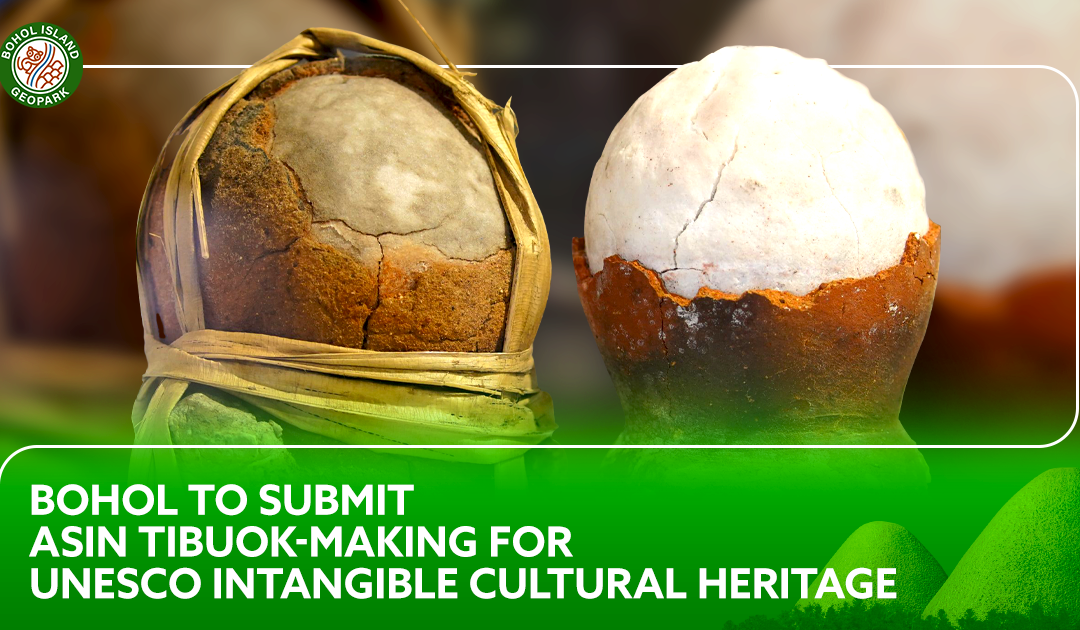
After its successful designation as the first UNESCO Global Geopark in the Philippines, Bohol is exploring more designations and inscriptions to promote the country’s rich cultural heritage.
The provincial government, through the Center for Culture and Arts Development, the Bohol Arts and Cultural Heritage Council, the local government unit (LGU) of Alburquerque, the National Museum of the Philippines- Bohol, and the local mangasinays of Alburquerque will submit the process of Asin Tibuok-making to be part of UNESCO’s Intangible Culture Heritage list, under in need of urgent safeguarding.
This initiative ensures the local tradition’s safeguarding and transmission to the next generation amidst a more globalized and modern world.
According to UNESCO, Intangible Cultural Heritage are practices, expressions, knowledge, and skills that communities, groups, and sometimes individuals recognize as part of their cultural heritage. This aspect of culture is community knowledge that does not have physical manifestations and is transmitted through informal or formal education such as the making of Asin Tibuok which has been passed by elders of Alburquerque to the next generation.
The General Conference of UNESCO on Intangible Cultural Heritage was adopted in 2003 at its 32nd session, the Convention for Safeguarding Intangible Cultural Heritage. This adoption seeks to create more awareness of heritage preservation and promote a sense of pride of place and diversity among communities through formulating international policies and programs that protect them.
Asin Tibuok is gaining popularity locally and internationally, sought after for culinary purposes for its smokey flavor or as souvenirs for tourists visiting Bohol due to its quirky aesthetic. However, local mangasinays fear for the future of the craft due to their aging population and lack of interest among communities.
With this initiative, the local mangasinays hope UNESCO can help strengthen safeguarding measures and create programs and projects that focus on the tradition’s transmission to the younger generation.
Asin Tibuok has a long history in the province and was widely produced among coastal communities in Bohol as early as pre colonial times. Historically, salt was traded as a commodity of the coastal communities, where the artisanal salt was bartered for rice and other agricultural crops among farmers in the province’s highlands.
Due to the enactment of Republic Act No. 8172, or “An Act for Salt Iodization Nationwide” (ASIN Law), in 1995, requiring saltmakers to iodize their products, Bohol saw a significant amount of asin tibuok makers abandon their livelihoods. Now, only Alburquerque practices the traditional salt-making.
At present, there is an existing movement among the cultural bearers of the salt to revitalize the salt-making in its traditional form in Alburquerque.
Under Executive Order Number 3, Series of 2024, signed by Gov. Erico Aristotle Aumentado last January, a technical working group composed of provincial government departments and attached offices, national government agencies, as well as the Alburquerque LGU and its salt-making community is tasked to comply with the requirements needed for UNESCO to inscribe the traditional salt-making.
Preliminary consultations and data consolidations were conducted as early as August of last year with the National Commission of Culture and Arts (NCCA), the UNESCO National Commission of the Philippines (UNACOM), and the mangasinays of Alburquerque on the needed requirements for its dossier submission. (CCAD/GMC)

